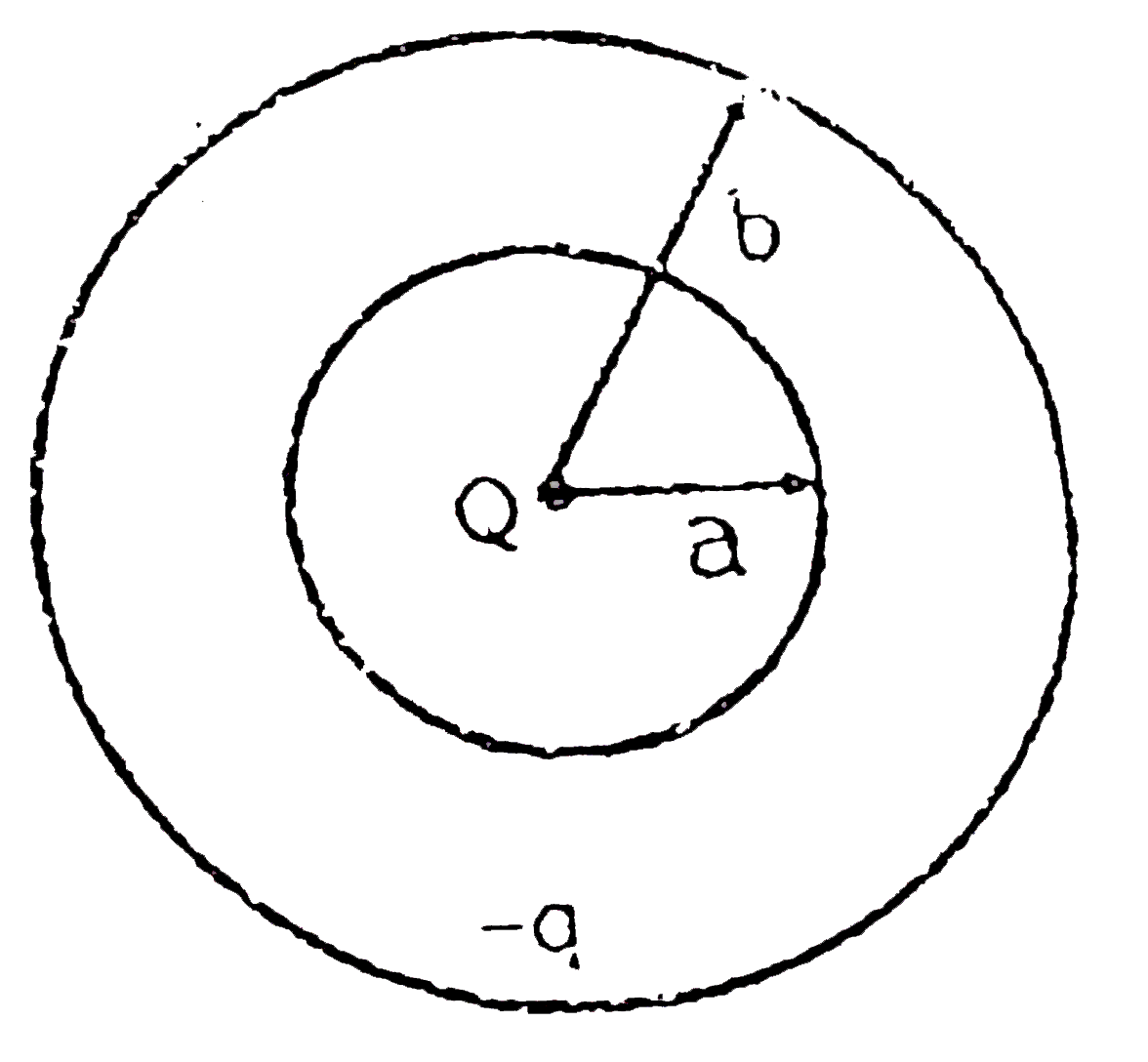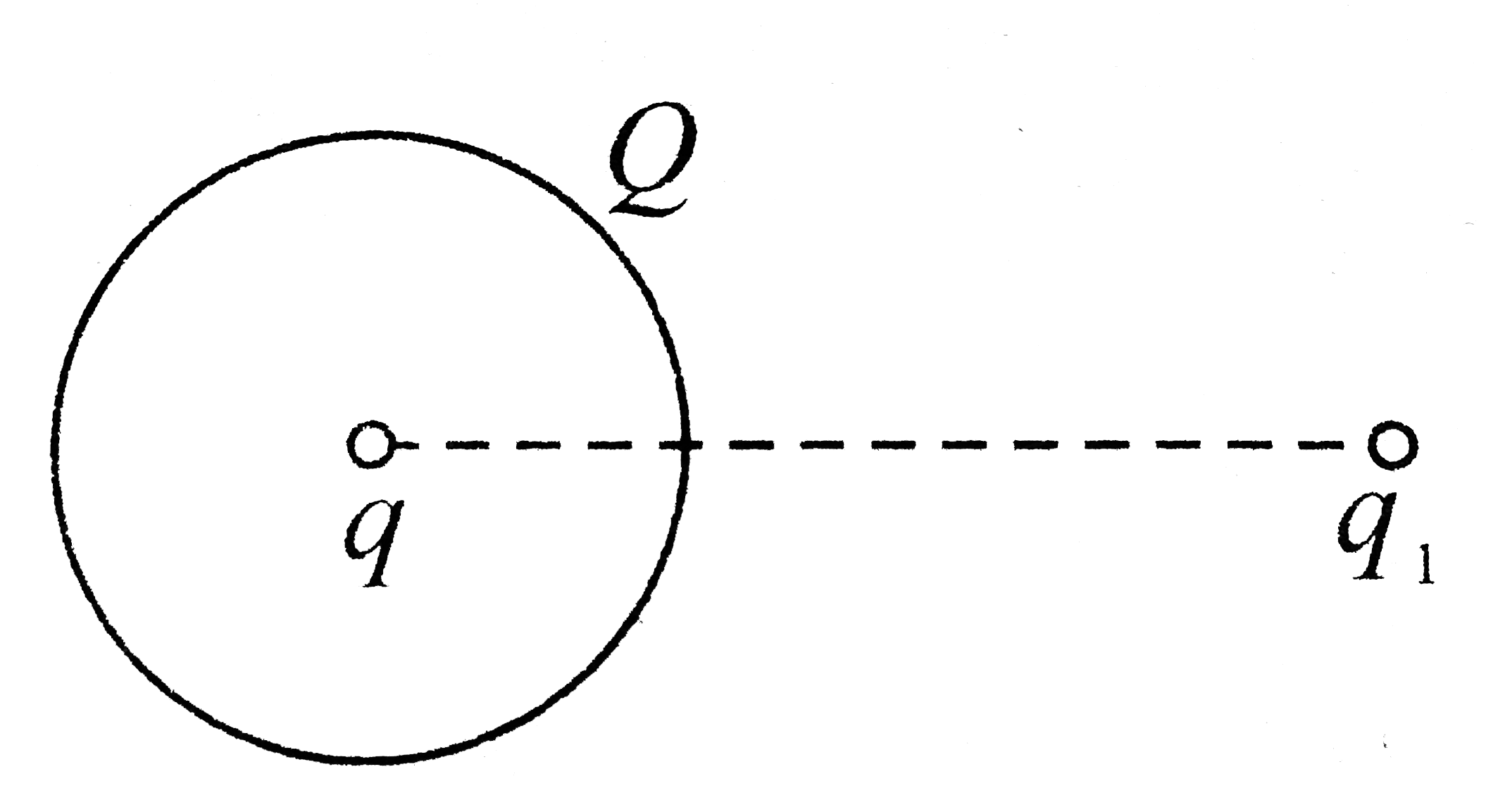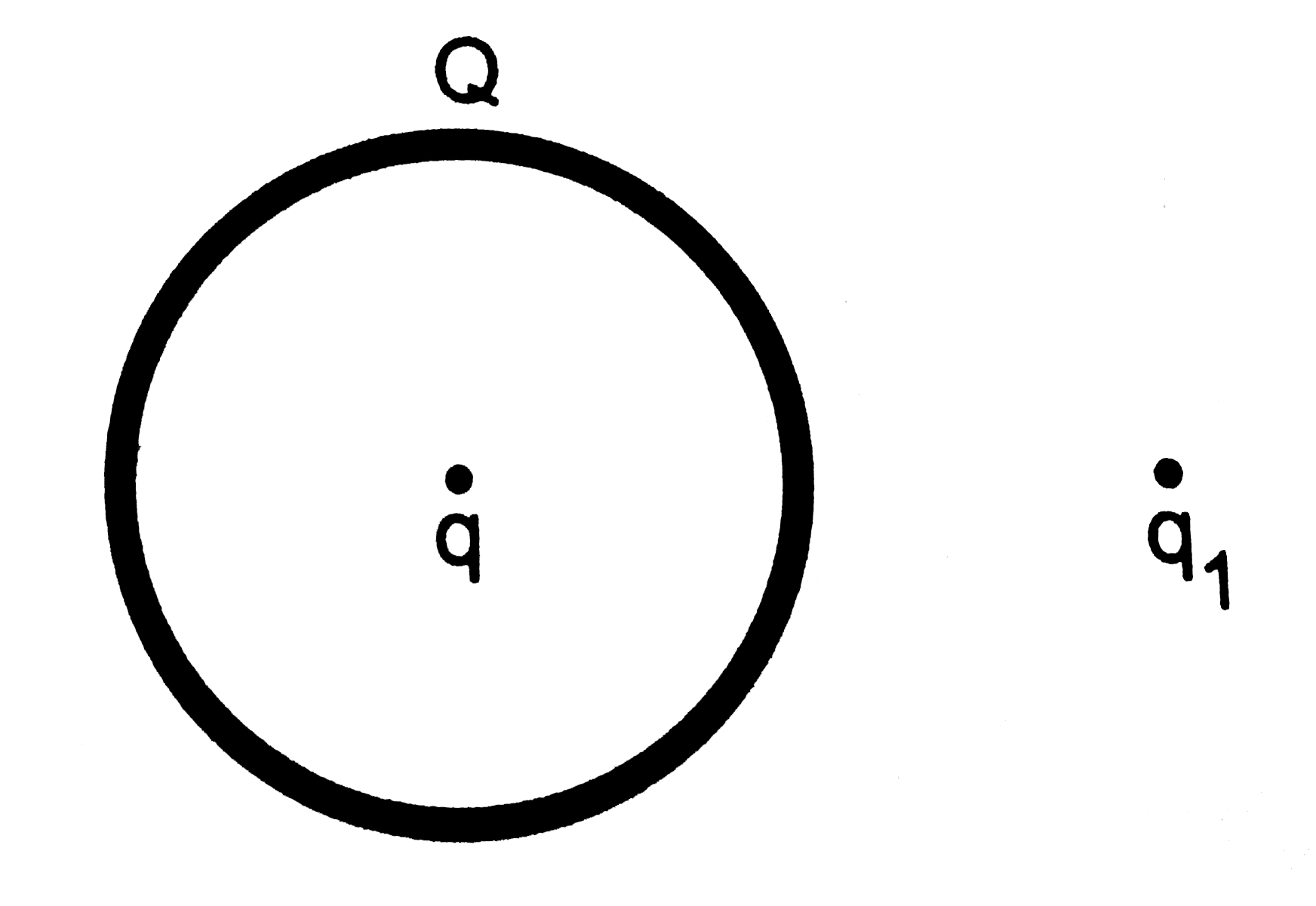A charge q is placed at the centre of the line joining two equal charges Q. The system of the three charges will be in equilibrium if q is equal to:
The correct Answer is:B
To solve the problem of finding the charge q that will keep the system of three charges in equilibrium, we can follow these steps:
Step 1: Understand the Configuration
We have two equal charges Q placed at a distance 2d apart. A charge q is placed at the center of the line joining these two charges, which means it is at a distance d from each charge Q.
Hint: Visualize the arrangement of the charges and their positions.
Step 2: Analyze Forces Acting on Charge q
For the charge q to be in equilibrium, the net force acting on it must be zero. The forces acting on q are due to the two charges Q.
Hint: Remember that like charges repel and opposite charges attract.
Step 3: Calculate the Force on Charge q
The force exerted on q by one of the charges Q (let's say the left one) is given by Coulomb's law:
FQ→q=k⋅Q⋅|q|d2
where k is Coulomb's constant.
Since there are two charges Q, the force due to the other charge Q will be the same in magnitude but directed towards the right.
Hint: Write down the expression for the force due to both charges acting on q.
Step 4: Set Up the Equilibrium Condition
For q to be in equilibrium, the force exerted by charge q on one of the charges Q must balance the force exerted by the other charge Q on q. The force exerted by q on one of the charges Q is:
Fq→Q=k⋅|q|⋅Qd2
Setting the magnitudes of the forces equal gives:
k⋅|q|⋅Qd2=k⋅Q24d2
Hint: Simplify the equation by canceling common terms.
Step 5: Solve for q
From the equilibrium condition, we can simplify:
|q|⋅Q=Q24
This leads to:
|q|=Q4
Since q must be of opposite sign to Q for the forces to balance (as one is repulsive and the other attractive), we conclude:
q=−Q4
Hint: Consider the sign of the charge based on the nature of the forces.
Final Answer
Thus, the charge q that will keep the system in equilibrium is:
q=−Q4
We have two equal charges Q placed at a distance 2d apart. A charge q is placed at the center of the line joining these two charges, which means it is at a distance d from each charge Q.
For the charge q to be in equilibrium, the net force acting on it must be zero. The forces acting on q are due to the two charges Q.
The force exerted on q by one of the charges Q (let's say the left one) is given by Coulomb's law:
FQ→q=k⋅Q⋅|q|d2
where k is Coulomb's constant.
For q to be in equilibrium, the force exerted by charge q on one of the charges Q must balance the force exerted by the other charge Q on q. The force exerted by q on one of the charges Q is:
Fq→Q=k⋅|q|⋅Qd2
Setting the magnitudes of the forces equal gives:
k⋅|q|⋅Qd2=k⋅Q24d2
From the equilibrium condition, we can simplify:
|q|⋅Q=Q24
This leads to:
|q|=Q4
Since q must be of opposite sign to Q for the forces to balance (as one is repulsive and the other attractive), we conclude:
q=−Q4
Thus, the charge q that will keep the system in equilibrium is:
q=−Q4
Topper's Solved these Questions
- ELECTROSTATICSBOOK - DC PANDEY ENGLISHCHAPTER - ELECTROSTATICSEXERCISE - JEE Advanced
44 Videos
- ELECTROSTATICSBOOK - DC PANDEY ENGLISHCHAPTER - ELECTROSTATICSEXERCISE - Comprehension
36 Videos
- ELASTICITYBOOK - DC PANDEY ENGLISHCHAPTER - ELASTICITYEXERCISE - Medical entrances s gallery
21 Videos
- EXPERIMENTSBOOK - DC PANDEY ENGLISHCHAPTER - EXPERIMENTSEXERCISE - Subjective
15 Videos
Similar Questions
A charge Q is placed at the centre of the line joining two point charges +q and +q as shown in figure. The ratio of charges Q and q is

View SolutionTwo idential point charges Q are kept at a distance r from each other. A third point charge is placed on the line joing the above two charges such that all the three charges are in equilibrium. The third charge
(a) should be of magnitude q=………..
(b) should be of sign .......
(c ) should be placed ........ .
View SolutionIf Two charges +qand+4q are separated by a distance d and a point charge Q is placed on the line joining the above two charges and in between them such that all charges are in equilibrium. Then the charge Q and it's position are
View SolutionShown in the figure a spherical shell with an inner radius 'a' and an outer radius 'b' is made of conducting metarial. A charge +Q is placed at the centre of the spherical shell and a total charge -q s placed on the shell. Charge -q is districuted on the surfaces as :

View SolutionA thin metallic spherical shell contains a charge Q on it. A point charge q is placed at the center of the shell and another charge q1 is placed outside it as shown in the figure. All the three charges are positive. Find the force on the charge

a. at centre due to all charges.
b. at center due to shell.
View SolutionTwo point charges +q and −q are placed a distance x apart. A third charge is so placed that at the three charges are in equilibrium. Then
View SolutionThree positive charges of equal magnitude q are placed at the vertics of and equilatral triangle of side l. How can the system of charges be palced in equilibrium?
View SolutionAssertion At the centre of the line joining two equal and opposite charges, E=0
Reason At the centre of the line joining two equal and similar charge, E≠0.
View SolutionA charge Q is place at each of the opposite corners of a square. A charge q is placed at each of the other two corners. If the net electrical force on Q is zero, then Q/q equals:
View SolutionA thin. Metallic spherical shell contains charge Q on it. A point charge q is placed at the centre of the shell and another charge q1 is placed outside it as shown in figure . All the three charges are positive. The force on the charge at the centre is

View Solution
